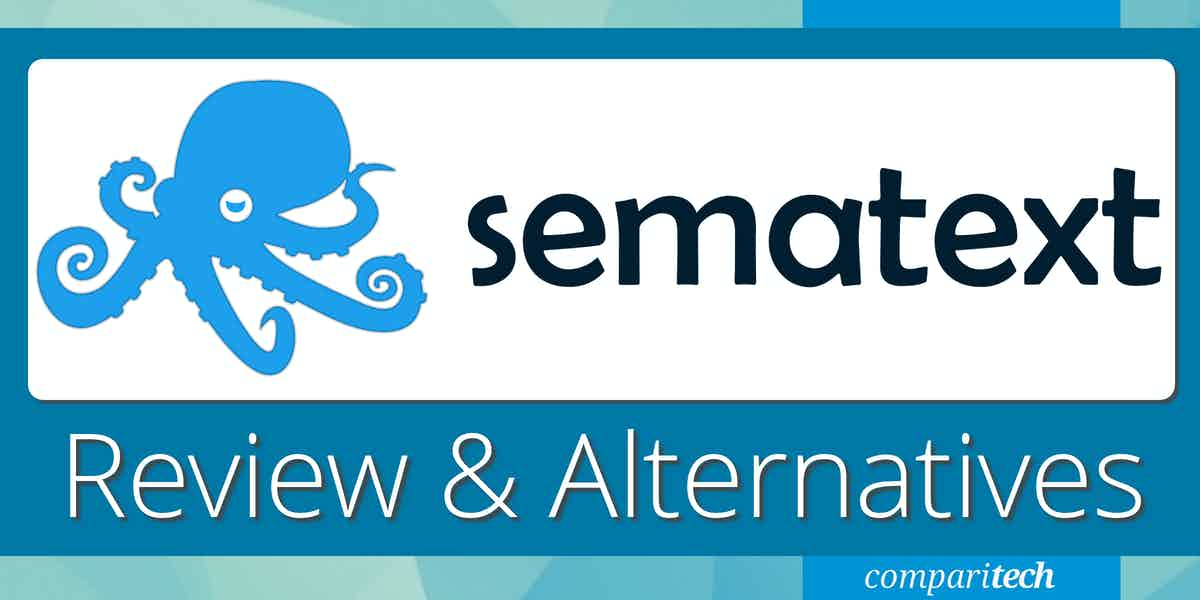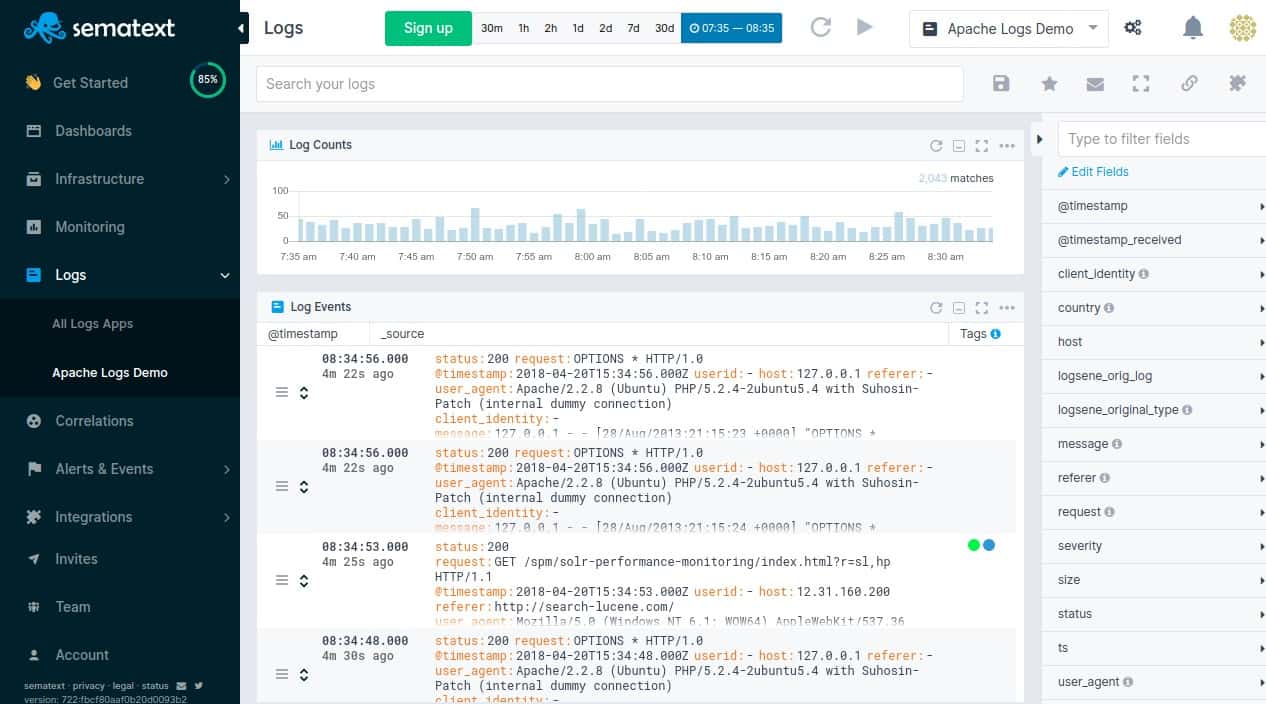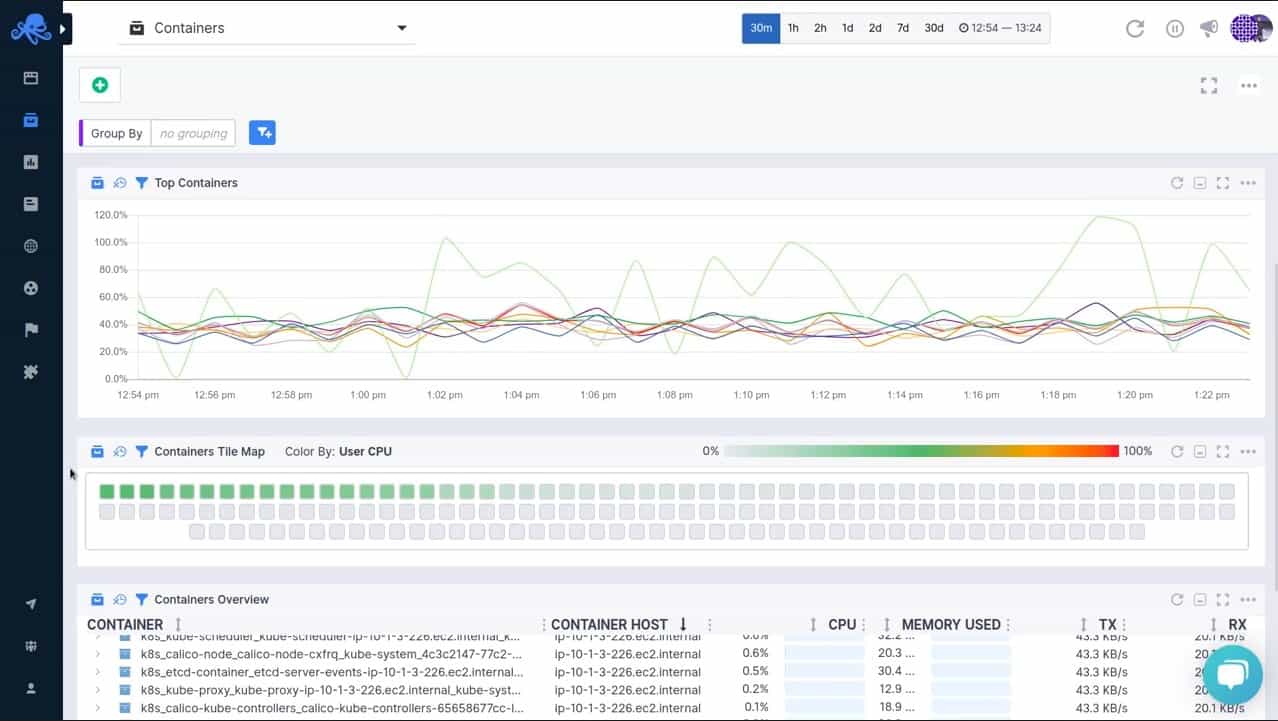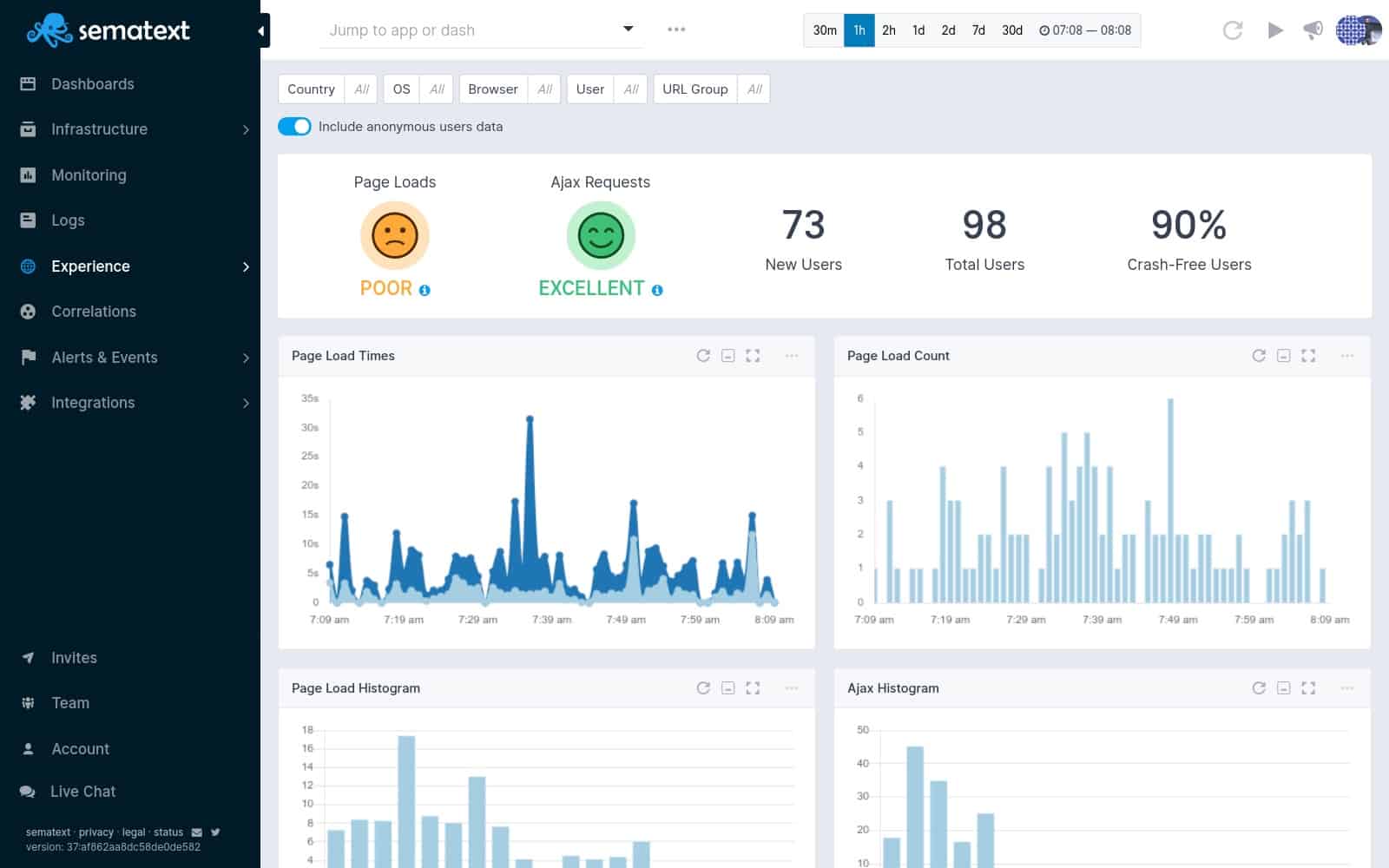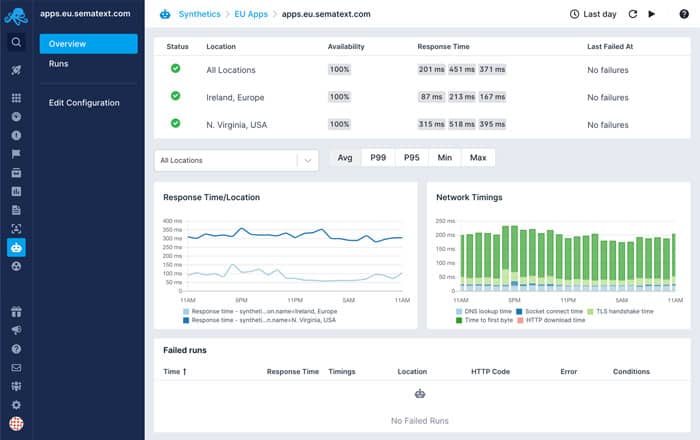Sematext is a SaaS platform that offers log management, system monitoring, real user monitoring, synthetic monitoring, and distributed tracing.
In this review, we will look at the features of Sematext and why you would use it.
Sematext isn’t the only log manager or system monitoring service on the market. So, we will also be examining some of the rivals to the business, focusing on those alternatives that deliver log management and analysis.
About Sematext
Sematext Group started in 2010 as a consultancy, originally called Sematext International. It was founded by Otis Gospodnetić in Brooklyn, New York, where it is still headquartered, and its founder still leads it. Gospodnetić became an authority on Apache Solr and Apache Lucene, which are two open-source search platforms. Sematext was created to help businesses adopt these technologies, and the company also gained expertise in Apache Mahout, a machine learning system, and Nutch, a Web crawler.
Sematext Monitoring was launched in 2013, exploiting Solr and Elasticsearch to explore system data and interpret live status reports into dashboard output. Essentially, this service behaves like a log message server, and so it wasn’t unexpected when the company produced Sematext Logs in 2014. In addition, distributed Tracing was added as a service in 2015.
Sematext moved its software to the Cloud in 2017, delivering it in the SaaS model. In addition, the company’s latest modules were added to the SaaS platform in 2019 and 2020. These are Sematext Experience, a real user monitoring service for Web pages, and Sematext Synthetic Monitoring, which is also aimed at monitoring the performance of websites.
Sematext Logs
The Logs module is probably the company’s most successful package. This is a hosted implementation of the ELK Stack. ELK is the group of services produced by Elastic BV in the Netherlands. The stack includes Elasticsearch, a data search engine, Logstash, a log file collector and parser, and Kibana, a Web interface for statistical analysis packages. The three elements fit together to create a suite of log management and analysis services.
Elastic BV released ELK to the public for free. However, the company charges for a SaaS version of the suite. In this, Sematext presents direct competition because Sematext Logs is precisely the same thing.
ELK is a great tool. However, it is a framework, and you still need to set up log collectors on your site and upload those messages to the Sematext server. The Sematext dashboard includes a free library of third-party agents that you can download and install. However, it is still up to you to set up those systems.
You need to create your queries to sort through all of the logs and work out how to feed those through to widgets in Kibana to get meaningful data shown on the screen. Once you have mastered selecting specific information from logs as they pass through the Logstash server, you can quickly learn how to look for security breaches and activity anomalies.
Sematext Infrastructure Monitoring
Sematext Infrastructure Monitoring places performance thresholds and resource utilization notification levels on gathered system metrics. So, if a problem starts to develop, that marker gets triggered, and an alert is generated. Getting alerts forwarded to essential technicians by email or Slack message means that IT operations staff don’t need to watch the system monitor’s dashboard all of the time. Instead, thresholds should be set at levels that allow technicians time to deal with the problem before it becomes noticeable by the users.
The Infrastructure Monitoring service watches over the performance of servers, applications, and services, such as virtualizations and Web servers. It doesn’t cover network performance. Instead, the system will track issues with databases, containers, and Java applications (through JVM). It can also reach out and collect statistics from Cloud platforms, including AWS, Azure, IBM Cloud, and Google Cloud Platform. It can fetch data from the iOS and Android mobile platforms as well.
Endpoint monitors in the service can collect data from Windows, macOS, and Linux. You can also get status data directly from the major Web browsers, and the system will scan devices for software and work out an applications dependency map.
Sematext Experience
Sematext Experience is an absolute user monitoring service. This tool can exercise interactive elements in a Web page to ensure that it works appropriately while running live. The module also gathers performance data on pages as they are delivered to each visitor. You will get alerts if errors occur in delivery or loading.
This tool records actual events in the website’s life.
Sematext Synthetic Monitoring
Accurate user monitoring can be expensive, and many of the stats you want to know about your website’s performance can be gathered through automated tests. This is the service offered by Sematext Synthetic Monitoring. The tool sends out requests for pages and checks on their delivery speed and load times. Tests can be launched from several points around the globe so that you can keep informed about your site’s availability to all users wherever they are.
Tools in this package include SSL Certificate monitoring with alerts on verification problems. You will also get traces on HTTP, DNS, and file transfer protocol issues.
Sematext Tracing
Sematext Tracing service follows distributed applications and microservices, using telemetry to record resource usage and performance of those interdependent functions and offloaded services. In addition, the system uses the OpenTracing protocol to catch debug messages from impenetrable functions and API backends as they run.
The Sematext Tracing service will generate an application dependency map that exposes the supporting services for each API and front-end module, drilling down recursively to find services that support services. The package has powerful tracing capabilities for code written in Java. This service is bundled in with the Sematext Infrastructure Monitoring package.
Sematext deployment options
Sematext is primarily a cloud platform. However, it is also available as an on-premises software package, called Sematext Enterprise, if you would instead host the system yourself. The software runs on Docker containers.
Sematext Enterprise doesn’t include Sematext Synthetic Monitoring. However, all of the other modules are available for on-premises installation.
Sematext Pros & Cons
Pros:
- Can run detailed browser checks that detail any elements that fail to load correctly
- Robust alerting that supports both internal and external monitoring
- Flexible subscription pricing as well as a pay-as-you-go option
- Well built alert system with multiple triggers and intelligent alert fatigue features
Cons:
- Would like to see a longer standard 30-day trial for testing
Sematext prices
Sematext has three plans for each of its packages – Sematext Tracing isn’t priced separately. There is a free tier for the Logs and Infrastructure Monitoring plans. The prices for the modules are:
Sematext Logs
- Basic – Collect, consolidate, and store logs, read them back into the dashboard for analysis. Daily volume allowance = 500 MB, data retention = 7 days, max event log size = 64 KB, price = $0
- Standard – Collect, consolidate, and store logs, see live data in the dashboard, and set up alerts. Daily volume allowance = 1 GB, data retention = 7 days, max event log size = 128 KB, price = $50 per month plus $0.10 per GB for data received but not stored and $1.56 per GB for data that is stored
- Pro – Collect, consolidate, store, and archive logs, see live data in the dashboard, set up alerts, and get automated anomaly detection. Daily volume allowance = 1 GB, data retention = 7 days, max event log size = 256 KB, price = $60 per month plus $0.10 per GB for data received but not stored and $1.56 per GB for data that is stored
Buyers of the Standard and Pro plans can increase their data throughput allowance and retention period for a higher fee.
Both Standard and Pro are available for a 14-day free trial.
Sematext Infrastructure Monitoring
- Basic – Live monitoring for services and applications but not servers, containers, or cloud platforms. Maximum of three hosts, free containers per host = 3, data retention = 30 minutes, max alert rules = 1, price = $0
- Standard – Live monitoring for servers, services, applications, containers, and cloud platforms. Free containers per host = 3, data retention = 1 month, max alert rules = 25, price = $0.007 per container per hour
- Pro – Live monitoring for servers, services, applications, containers, and cloud platforms. Free containers per host = 8, data retention = 2 months, max alert rules = unlimited, price = $0.011 per container per hour
Both Standard and Pro are available for a 14-day free trial.
Sematext Experience
- Startup – Record user sessions and get a resource timeline. Number of views per month = 25,000, data retention = 7 days, alert rules = 5, domains = 1, price = $9 per month
- Standard – Record user sessions and get a resource timeline. Number of views per month = 100,000, data retention = 7 days, alert rules = 10, domains = 3, price = $19 per month
- Pro – Record user sessions and get a resource timeline. Number of views per month = 100,000, data retention = 30 days, alert rules = unlimited, domains = unlimited, price = $89 per month
The data retention period for all plans and the number of views for the Standard and Pro plans can be increased for a higher fee.
Sematext Synthetics
- Pay-As-You-Go – API and browser-based tests. Data retention = 30 days, price = $2 per HTTP monitor + $7 per browser per month
- Standard – API and browser-based tests with alerts and customized tests. Data retention = 30 days, HTTP monitors = 40, browsers = 5, price = $29 per month
- Pro – API and browser-based tests with alerts, customized tests, browser error logs, and failure handling. Data retention = 30 days, HTTP monitors = 100, browsers = 15, price = $99 per month
The number of HTTP and browser tests and the data retention period included in the package can be increased on the Standard and Pro plans for a fee.
All plans are available for a 14-day free trial.
Sematext strengths and weaknesses
Pros:
- Option of SaaS or on-premises for most modules
- Discounts for combinations of services
- Monitoring tools are easy to use
- Scalable pricing that is accessible to businesses of all sizes
- Free for small businesses with low usage
Cons:
- ELK stack is available for free from its producer
- Need to learn how to create queries in Elasticsearch and link output to Kibana interface widgets
Sematext alternatives
Sematext has a range of functions, so we focused our search for alternatives on the log management system.
What should you look for in a Sematext alternative?
We reviewed the market for log management systems and analyzed the options based on the following criteria:
- An easy-to-use service
- Secure transfer of log messages from the collector to the log server
- The ability to use the system for standards compliance auditing
- The option to use the log manager as the basis for security monitoring
- Associated monitoring services that can feed reports into the log manager
- A free trial or a demo system for a no-cost assessment or a free tool
- A paid tool that offers value for money or a free tool that is worth working with
Here is our list of the six best Sematext alternatives.
- Site24x7 Log Management (FREE TRIAL) This cloud-based package is able to collect log messages from operating systems and software packages, unifying them into a common format so they can be stored together. Not only does this system receive and store log messages but it displays them in a data viewer. That utility includes analysis tools to sort, filter, and group records. It can also parse and forward messages for processing by other applications. Get a 30-day free trial.
- Datadog Log Management This SaaS package manages log messages, shows and interprets data as it arrives, and archives and recalls log files. Datadog also offers a SIEM add-on to the log manager and has a range of monitoring systems on its platform that can feed into the log manager. This platform also provides accurate user monitoring, synthetic monitoring, distributed tracing, and application and infrastructure monitoring. Datadog offers a 14-day free trial on all of its modules.
- ELK Stack This is the software that Sematext provides for its Logs service, and you can get it for free to run on your servers. Elastic also offers a hosted version called Elastic Cloud for a fee and has created a paid security monitoring add-on. Get a 14-day free trial of Elastic Cloud.
- Graylog This is a free, open-source log manager that can be used for a range of live monitoring purposes, including security monitoring. A paid version can be installed onsite, called Graylog Enterprise, and a SaaS paid version, called Graylog Cloud. Graylog also offers a paid security monitoring add-on. Small businesses can get Graylog Enterprise for free.
- Splunk This is a log collector and analyzer that is available in free and paid versions. There is also a security add-on. The free Splunk is available for on-site hosting, and the paid version is offered as a software package and a SaaS platform. Get a 60-day free trial of Splunk Enterprise, which is the paid on-site version.
- Loggly A SaaS log consolidator and manager that shows live data on the console as log messages arrive and storing them. The lowest plan, Loggly Lite, is free to use, and the other plans are offered on a 30-day free trial.

